New products at Crocus
by Sarah - September 16th, 2010.Filed under: Crocus, New Products.
New items at Crocus

bronze-puppy £79.99
Who can resist this wonderfully detailed sculpture of a sleeping labrador puppy? It would look perfectly at home on a patio, alongside an entrance or in a sunny corner of the garden – a must for any dog lover. Made from cold cast bronze (bronze resin) it’s 100% weatherproof and measures 15cm x 49cm.
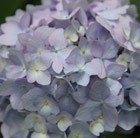
hydrangea £17.99
Position: full sun or partial shadeSoil: moist, well-drained, moderately fertile, humus-rich soilRate of growth: fast-growing Flowering period: June to October Flower colour: blue (in acidic soils)Hardiness: fully hardyAfter 10 years of development in the USA, the ‘Endless Summer’ Hydrangeas are a welcome new addition to this much loved group of plants. They are unlike any other type of Hydrangea in that they will flower on both old and new wood, so they will be laden with flower from June to October, despite late frosts and badly timed pruning. This is the blue flowered form (they also come in pink and white), which is ideal for cool summer planting schemes, but to keep the flower colour it should be planted in acidic soil or ericaceous compost.Garden care: Leave the old flower heads in place through the winter. As the new shoots start to emerge in spring cut back a third to a quarter of the previous seasons flowering stems to the base and cut back the remaining flower heads to the first pair of buds.
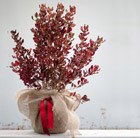
coprosma £12.99
Position: full sun or partial shadeSoil: neutral to slightly-acid, moderately-fertile, moist, well-drained soilRate of growth: averageOther features: inconspicious tubular summer flowersHardiness: fully hardy (borderline)A brand new introduction that was discovered by John Woods nursery in Suffolk, this is a truly outstanding plant with vibrantly coloured foliage. The leaf colour is at its most intense in spring and late autumn, but is still a head-turner at other times of the year. It forms neat, compact shrubs that are perfect for adding contrast to mixed borders, or try planting it up into a pot to add a blast of evergreen colour to your patio.Garden care: In spring, llightly trim any branches that spoil the symmetry of the plant. Afterwards apply a generous 5-7cm (2-3in) mulch of well-rotted leaf mould or composted pine needles around the base of the plant.
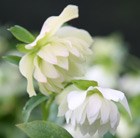
hellebore £10.99
Position: partial shadeSoil: heavy, neutral to alkaline soilRate of growth: average Flowering period: February to April Flower colour: double creamOther features: all parts of the plant cause severe discomfort if ingested; the sap may cause skin irritationHardiness: fully hardy (borderline)Attractive, pendent or outward-facing, saucer-shaped cream, double flowers from February to April above leathery, deep green leaves. This lenten rose makes a stunning ground cover to light up areas of dappled shade under deciduous trees and shrubs. Like all hellebores, they prefer a heavy, neutral to alkaline soil.Garden care: Add lots of well-rotted leaf mould or organic matter to the planting hole. Apply a generous 5-7cm (2-3in) mulch of well-rotted organic matter around the base of the plant in autumn and provide a top-dressing of general fertiliser each spring
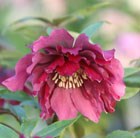
hellebore £10.99
Position: partial shadeSoil: heavy, neutral to alkaline soilRate of growth: average Flowering period: February to AprilOther features: all parts of the plant cause severe discomfort if ingested; the sap may cause skin irritation; dark greyish-green leaves give off an unpleasant odour when crushedHardiness: fully hardyAn unusual variety of hellebore, with gorgeous, nodding or outward-facing, sauce saucer-shaped red, double flowers with curved petals from late winter to early spring. The handsome evergreen foliage is leathery, deeply cut and dark green. This lenten rose is grown from seed, so colour variations may occur. It looks best planted in groups at the front of a partially shady mixed border, or under shrubs among spring-flowering bulbs. In former times, hellebores were planted close to cottage doors to prevent evil sprits from crossing the threshold.Garden care: A top tip from the Crocus crew is to cut back the old leaves down to the ground in January or February. This will show off the new emerging flowers to best effect and it also helps to get rid of foliar diseases such as Hellebore leaf spot. Add lots of well-rotted leaf mould or organic matter to the planting hole. Apply a generous 5-7cm (2-3in) mulch of well-rotted organic matter around the base of the plant in autumn and provide a top-dressing of general fertiliser each spring.

hellebore £10.99
Position: partial shadeSoil: heavy, neutral to alkaline soil, including heavy soilRate of growth: average Flowering period: February to AprilOther features: all parts of the plant cause severe discomfort if ingested; the sap may cause skin irritation; dark greyish-green leaves give off an unpleasant odour when crushedHardiness: fully hardy (borderline)Nodding or outward-facing, double, deep purple-black flowers open in February and last for up to three months. The handsome evergreen foliage is leathery, deeply cut and dark green. This is a new variety of lenten rose and the unusual, purple-black flowers have a dark blue sheen and creamy-yellow centres. They look stunning contrasted with snowdrops. To appreciate their colour, they are best planted in groups at the front of a partially shady mixed border, ideally where they can be seen through windows in winter, or as a ground cover plant for areas of dappled shade under deciduous trees and shrubs. In former times, hellebores were planted close to cottage doors to prevent evil spirits from crossing the threshold.Garden care: A top tip from the Crocus crew is to cut back the old leaves to the ground in January or February. This will show off the emerging flowers to best effect and it also helps to get rid of foliar diseases such as hellebore leaf spot. When planting, add lots of well-rotted leaf mould or organic matter to the planting hole. Apply a generous 5-7cm (2-3in) mulch of well-rotted organic matter around the base of the plant in autumn and provide a top-dressing of general fertiliser each spring.
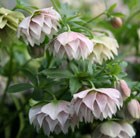
hellebore £9.99
Position: partial shadeSoil: heavy, neutral to alkaline soilRate of growth: average Flowering period: February to April Flower colour: lilacOther features: all parts of the plant cause severe discomfort if ingested; the sap may cause skin irritationHardiness: fully hardyA gorgeous, new variety with pendent or outward-facing, saucer-shaped flowers that are crammed with lilac-coloured petals. These apear from February to April above the leathery, deep green leaves. This lenten rose creates a stunning ground cover for areas of dappled shade under deciduous trees and shrubs. Like all hellebores, they prefer a heavy, neutral to alkaline soil.A top tip from the Crocus crew is to cut back the old leaves down to the ground in January or February. This will show off the new emerging flowers to best effect and it also helps to get rid of foliar diseases such as Hellebore leaf spot.Garden care: Add lots of well-rotted leaf mould or organic matter to the planting hole. Apply a generous 5-7cm (2-3in) mulch of well-rotted organic matter around the base of the plant in autumn and provide a top-dressing of general fertiliser each spring.
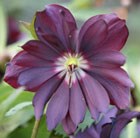
hellebore £9.99
Position: partial shadeSoil: heavy, neutral to alkaline soilRate of growth: average Flowering period: February to April Flower colour: chocolateOther features: all parts of the plant cause severe discomfort if ingested; the sap may cause skin irritationHardiness: fully hardyThis recently introduced cultivar has already created a bit of a stir among gardening circles with its delicious-looking, chocolate-coloured flowers. These many-petalled, saucer-shaped blooms appear above the leathery, deep green leaves from February to April. This lenten rose creates a stunning ground cover for areas of dappled shade under deciduous trees and shrubs. Try mixing it with a lime green, spring-flowering Euphorbia for a stunning combination. Like all hellebores, they prefer a heavy, neutral to alkaline soil.A top tip from the Crocus crew is to cut back the old leaves down to the ground in January or February. This will show off the new emerging flowers to best effect and it also helps to get rid of foliar diseases such as Hellebore leaf spot.Garden care: Add lots of well-rotted leaf mould or organic matter to the planting hole. Apply a generous 5-7cm (2-3in) mulch of well-rotted organic matter around the base of the plant in autumn and provide a top-dressing of general fertiliser each spring.
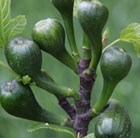
black fig £9.99
Position: full sunSoil: will tolerate most soils, except very badly drainedRate of growth: averageOther features: medium-large, brown fruit (August to September)Hardiness: fully hardyDecorative 3- to 5-lobed leaves on a deciduous, spreading shrub. To ensure a good crop of figs, it is best planted against a south-facing wall. From August to September a crop of pear-shaped fruit, green when young maturing to deep purple or dark brown, will be ready for picking and eating if the tender, developing fruits are protected in their first winter. This fig is traditionally grown in the Valencia region in Spain, which is noted for its favourable microclimate, and the fruits are so delicious, they are the first choice for leading greengrocers.Garden care: Plant in a 40cm (15in) pot in the ground or in a lined pit to restrict root growth – unrestricted root growth leads to poor fruiting. Prune in summer, trimming all shoots back to about 5 leaves from the main stem. Remove any frost damaged or weak branches in spring.Figs are capable of producing three crops of fruit every year, but in our climate it is the tiny little ones that you find tucked into the leaf axils in autumn, that if protected from frosts, will go on to ripen in their second summer. Therefore if you are growing the fig for its fruit rather than its foliage, you should remove any developing fruits that are larger than a pea in autumn, and either cover the crown of the tree with a blanket of frost fleece or try to gently pack it with straw. This will keep them snug and warm throughout winter and push the plants energy into the development of the young fruits, which should grow into fully ripened figs next year.
turkscap lily £9.99
turkscap lily £9.99
hellebore £9.99
hellebore £9.99
hellebore £9.99
turkscap lily £9.99
turkscap lily £9.99
hellebore £7.99
red hot poker £6.99
stinking gladwyn £6.99






